Clay roof tiles are a perennial favourite with homeowners. And this should come as no surprise.
The thing is:
They’re highly durable, long lasting, weather resistant, easy to maintain and aesthetically pleasing.
It’s a win on all fronts!
But with so many options available on the market, how do you choose the right clay tile roofing for your particular needs?
At Roofing Superstore, we decided to take a deep dive into the various types of clay roof tiles to help you make an informed purchase.
We’ve also got a roof tile pitch guide and much more!
Here’s a sneak peek.
Table of contents:
- What are clay roof tiles used for?
- Types of clay roof tiles
- What is the minimum roof pitch for clay tiles?
- Cost of clay roof tiles
- How do you fasten clay roof tiles?
- What are the disadvantages of clay tiles?
- The bottom line
What are clay roof tiles used for?
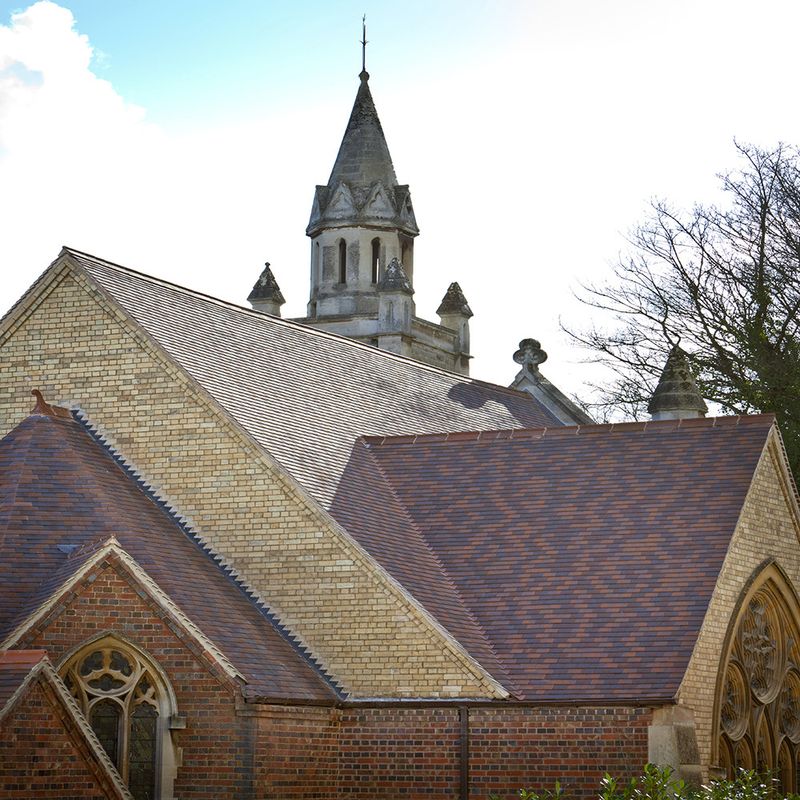
Clay roofing is typically seen as a higher-quality, more eco-friendly option than many alternatives, such as concrete roofing tiles.
Because they’re manufactured to strict British Standard regulations and designed specifically to withstand a wide variety of harsh weather conditions, traditional clay roof tiles tend to last longer, provide superior protection from the elements and require less maintenance.
What’s more:
There’s no shortage of exciting roof tile designs, shapes, colours and finishes to choose from, making clay roof tiles an endlessly versatile solution ideally suitable for use in both modern and traditional builds.
Types of clay roof tiles
One of the main decisions you’re going to have to make is choosing the type and style of clay roofing.
With that in mind, here’s an overview of the main clay roof tile types currently available on the UK market.
Mission tiles
Also known as barrel-style tiles, traditional mission tiles are fitted in pairs, with the top (or cover) tile overlapping the lower (or pan) tile – either in neat rows or with the help of mortar, which creates a more rustic look. They’re usually 8″-12″ wide and 16″-19″ long.
Now:
Mission tiles are particularly popular in the Northern Mediterranean where we can trace their origin all the way back to Classical Antiquity. So, it should come as no surprise that picturesque Roman and Greek profile barrel-style tiles are among the most commonly found options across much of Spain, Italy and the south of France.
Spanish tiles
Spanish tiles are S-shaped, high-profile tiles which provide a similar look to Mission tiles but are easier to fit because they’re a single-piece solution. This makes the Spanish roof tile a more cost-effective option, especially if you’re planning on laying the tiles yourself.
The most common size Spanish tiles are 13″ wide and 16 1/2″ long; however, additional sizes, such as 9″ by 14″, are also easy to come across.
Flat tiles
Flat tiles can be either interlocking or overlapping, making them one of the most versatile options. They also come in multiple sizes, ranging from anywhere between 6″ to 8″ in width by 12″ to 18″ in length.
French tiles
French tiles are interlocking low-profile tiles that feature two reinforcing groove-shaped ribs for more efficient drainage and a unique aesthetic, resulting in one of the most distinctive roof tile styles.
French tiles are typically installed in a single thickness and have a 3″ roof tile overlap. So, in case you were wondering ‘how much should roof tiles overlap’, you now have your answer for this particular type.
In terms of size, most French tiles are 9″ -13″ wide and 11″-16″ long.
Roof tile pitch guide: what is the minimum roof pitch for clay tiles
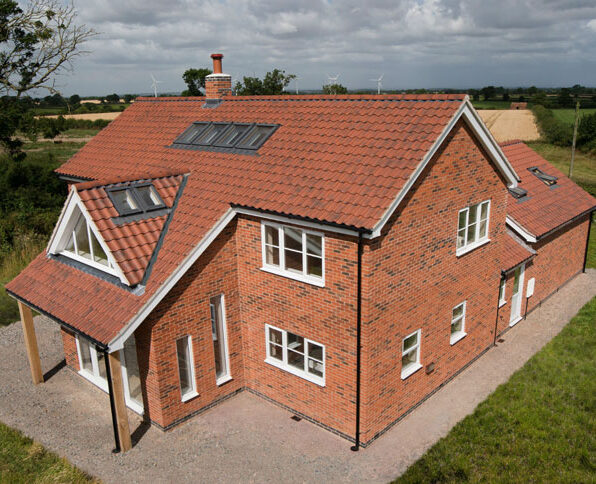
The term ‘minimum roof pitch’ refers to the lowest possible roof slope or angle at which you can fit a particular type of tile or slate without any leaks. All tiles have a minimum roof pitch, which should be clearly stated in the manufacturer’s instructions.
Now:
When it comes to the minimum roof pitch for clay tiles, you have to pay special attention to each brand and range.
Here’s a quick illustration:
The popular Sandtoft Modula Double Roman Clay Roof Tile, for instance, has a minimum roof pitch of 17.5° at 100mm headlap and 22.5° at 75mm headlap. In contrast, the corresponding figure for the Marley Hawkins Clay Plain Tile is 30°. As you can clearly see – quite a significant difference.
Having said that, you’ll find certain patterns across different brands and ranges, which mostly have to do with the type of profile (high, low or flat) and needed headlap (if any; again, this largely depends on the design).
Here’s the scoop:
Some ranges of clay roof tiles are designed specifically for use with roofs with a pitch of as little as 12.5°-15°. However, the most common options on the market are either in the 17.5°-22.5° (depending on the headlap) or 30°-35° ranges.
Key takeaway:
Before making any final purchase, you need to find out your exact roof pitch and double-check the manufacturer’s product brochure to ensure your preferred clay tiles are suitable.

Cost of clay roof tiles
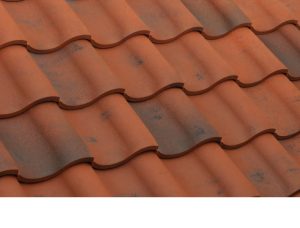
Traditionally, clay roof tiles have been synonymous with high costs as well as high quality.
The good news is:
That’s no longer the case across the board! With so many different types and profiles currently on the market, you shouldn’t be surprised to find out that the clay roof tile price varies dramatically from brand to brand and from range to range.
If you’re looking for a bargain, you should seriously consider low-cost, machine-produced clay tiles. While these are still around 10% more expensive than their concrete equivalents, they’re more stylish and more durable.
At the other end of the spectrum, high-end, handmade clay tiles will set you back considerably further. When it comes to quality, aesthetics and longevity, though, it’s safe to say they’re in a league of their own.
For specific figures, check out our in-depth guide on Clay roof tile prices.
By this point, you’re probably wondering:
How many clay roof tiles do I need?
The answer to this key question ultimately depends on a few factors. They are:
✅The size of your roof (or of the part of your roof which needs new tiles)
✅The size of the tiles you’ll be using
✅The tile profile and the required overlap (if any)
Once you’ve noted everything, simply head over to our guide to find out how to calculate the number of tiles you’re going to need for your next project and how much they’re going to cost.
But wait!
There’s one final thing you need to take into account – especially if you’re not a seasoned DIYer yourself – namely, the cost of hiring a professional.
Here’s the scoop:
The average cost for a roofer is currently between £18 and £25 per hour. However, the actual quote you’ll get is likely to vary significantly depending on experience and location.
How do you fasten clay roof tiles?
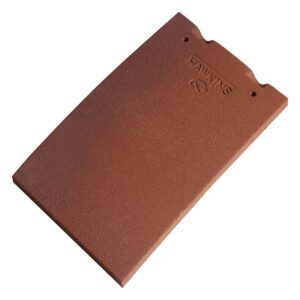
There are different fasteners you can use to lay clay roof tiles, including special clips, wire, ballast stones and more.
The exact method you’ll end up going for will largely depend on the type and profile of the clay roof tiles you’re using. In most cases, it will be specified in the manufacturer’s product brochure.
Having said that, let’s take a closer look at the general process so you can get a general idea:
- Prepare the roof
- Fit suitable underlay
- Install timber battens
- Tile the roof
- Cut the tiles where necessary
To find out more about each step, head over to our comprehensive guide on Tiling a roof.
What are the disadvantages of clay tiles?
We’ve already discussed the many advantages of clay tiles. But as with most roofing solutions, there are two sides to the same coin.
And while the pros of clay roofing greatly outweigh its cons, we would be doing you a disservice if we didn’t so much as mention the latter.
With that in mind, here are the main disadvantages of clay roof tiles:
Weight
Clay tiles are generally heavier than most alternatives. So, it’s absolutely vital that you make sure your roof can sustain the extra weight of clay tiles without any potential damage to the underlying structure.
Tricker installation
Because most hand-made and hand-crafted clay tiles are not uniform in size, they have to be measured and cut carefully so as to avoid any cracks prior to installation. That’s why it’s best to hire a professional to fit your clay tiles – especially higher-end products!
Cost
We’ve already discussed the cost of clay roofing, so we won’t dwell on it here. While clay tiles are more expensive than most alternatives, there’s no shortage of cost-effective options out there. And at the end of the day, you get what you pay for.
On that note…
The bottom line
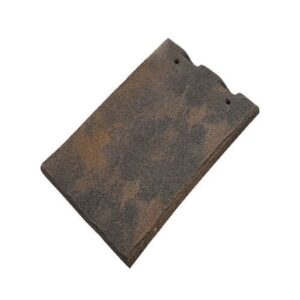
Clay roof tiles can add a stunning traditional look to your home and provide the pièce de résistance of your exterior design.
What’s more:
Their benefits – in the shape of durability, longevity and unparalleled elegance – definitely outweigh the disadvantages.
It gets better:
With so many types of clay roof tiles – from Spanish and French to 20/20 roof tiles and more – currently available on the market, you’ll be spoiled for choice!
Luckily, with our clay roof tiles buyer’s guide by your side, you’re now well prepared to choose the right solution for your home.

















